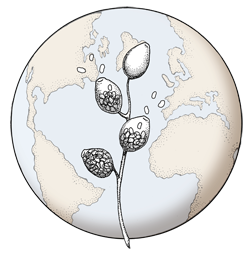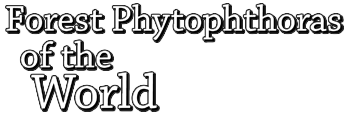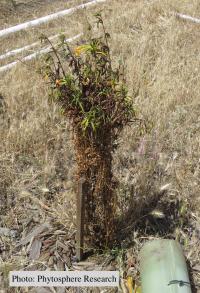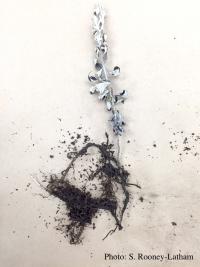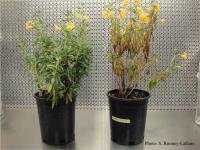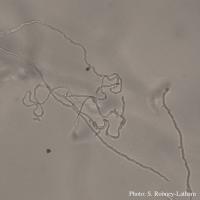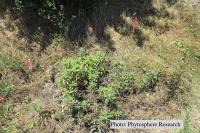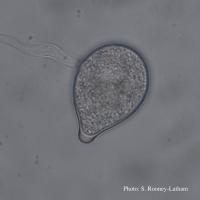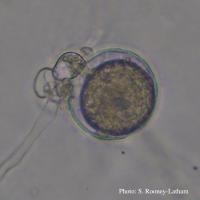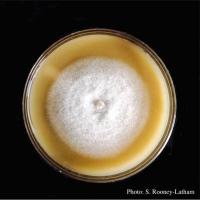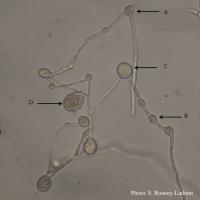Outplanted sticky monkey flower (Diplacus aurantiacus) infected with P.
tentaculata 1.5 years after outplanting. Plant shows severe stunting and dieback.
Photo Gallery
|
P. tentaculata disease symptoms on sticky monkey flower |
P. tentaculata disease symptoms on California mugwort Nursery grown California mugwort plant (Artemisia douglasiana) infected with P. tentaculata and exhibiting severe root and crown rot |
P. tentaculata chlamydospore P. tentaculata chlamydospore with short hyphal projection |
|
P. tentaculata oogonia and antheridia Oospores and oogonia with mostly paragynous but some amphigynous antheridia of P. tentaculata |
P. tentaculata disease symptoms on sticky monkey flower Crown and root rot (left) on sticky monkey flower (Diplacus aurantiacus) compared with a control (right) |
P. tentaculata hyphae Looping hyphae commonly seen with P. tentaculata on PARP media |
|
P. tentaculata disease symptoms on California mugwort Outplanted California mugwort (Artemisia douglasiana) infected with P. tentaculata, 4.5 years after planting. Plant shows stunting and chlorosis. (P. cryptogea and P. lacustris were also baited from roots/soil of this plant). |
P. tentaculata sporangium Papillate sporangium of P. tentaculata |
P. tentaculata oospores and antheridia Paragynous antheridium attached to oogonium with oospore |
|
P. tentaculata sporangium Papillate sporangium of P. tentaculata with an elongated neck or beak. |
P. tentaculata on V-8 media Culture of P. tentaculata on V-8 media |
P. tentaculata microscopic characteristics Hyphal swellings occuring at branching points of Mycelium (A), Intercalary hyphal swellings (B), Chlamydospore (C ), Sporangia (D) |

